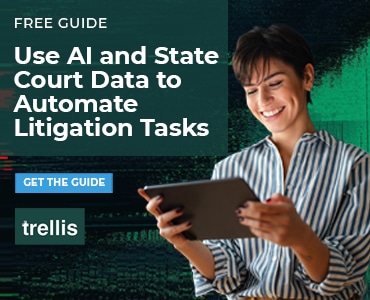Staying abreast of best practices for search engine optimization is a challenge, especially as Google increasingly favors Experience, Expertise, Authoritativeness, and Trustworthiness (EEAT). Getting website content to appear on the first page of results when people search for “top [insert industry/practice area] lawyer in [insert location]” now requires a commitment to demonstrating profound credibility.

Table of contents
- SEO Writing Tips: Seven Action Areas, Updated for 2025
- 1. Keywords, Search Intent, and Semantic Grouping (2025 Update)
- Adopt Semantic Grouping (Topic Clusters)
- Abandon Density Targets: Beware of Density
- 2. Writing Length and EEAT
- 3. Structure, Scannability, and Feature Snippets
- 4. Support Materials and Trust Signals
- 5. Regular Updates: The Content Refresh Cycle
- 6. Time and Technical Health
- 7. PR, Social Media, and AI Integration
- Influencing Factors Beyond Your Control
So what about us legal professionals who want to maximize the number of visitors to our website while upholding the highest standards of accuracy?
Here’s an updated, EEAT-focused action list to improve SEO and encourage strong, high-ranking writing across your organization.
So what about us mere mortals who want to maximize the number of visitors to our website?
SEO Writing Tips: Seven Action Areas, Updated for 2025
Google offers a great starter SEO guide. And here’s an action list we use at my firm to improve SEO and encourage strong writing across the organization, no matter what the message is.
1. Keywords, Search Intent, and Semantic Grouping (2025 Update)
Are you hoping to be found in search results for specific queries? Forget the mechanical rules of the past and embrace the user’s intent.
- Prioritize Search Intent Above All Else: Before writing, determine the user’s primary intent for the query. Is it:
- Informational? (e.g., “What is a trust fund?”)
- Commercial Investigation? (e.g., “Best litigation lawyer for startups”)
- Transactional? (e.g., “Hire a divorce attorney in Seattle”)
Your content must be designed to satisfy that single, dominant intent completely. A misalignment (e.g., trying to sell services on an informational “what is” page) leads to high bounce rates and poor rankings.
Adopt Semantic Grouping (Topic Clusters)
The old method of optimizing an entire page for a single keyword is outdated. Google now understands entities and related concepts.
- Action: Instead of repeating your core keyword, use a semantic cluster of related terms throughout the content (e.g., if the core keyword is “real estate closing,” ensure you naturally include terms like “title insurance,” “escrow agent,” “deed transfer,” and “closing costs”).
- This demonstrates Expertise by proving you understand the full legal topic, not just one phrase.
Abandon Density Targets: Beware of Density
The outdated concept of “keyword density” (e.g., between 2% and 3%) is largely irrelevant and can actively harm your ranking if keywords are unnaturally forced. Use your core keyword naturally in the first paragraph, and then focus on using variations and long-tail phrases that sound natural and conversational throughout the remainder of your content.
Target Long-Tail and Conversational Queries: With the rise of voice search and generative AI, people are searching with longer, more complex questions.
- Action: Ensure your writing addresses full, natural language questions (e.g., “What happens to my house if I don’t have a will?”) rather than just “probate real estate.”
- Limit the Legal Jargon, But Use Precise Terms: Write for the educated layperson. However, use specific, precise legal terms when necessary to target niche, professional searches (e.g., “Quiet Title Action” vs. “property dispute fix”) and immediately follow with a clear, layman’s explanation. This ensures you satisfy both expert and general searches.
2. Writing Length and EEAT
Some things to know about length and building credibility:
- Focus on Completeness, Not Just Word Count: Watch your word count. While 300 words is a minimum, the length should be dictated by what it takes to cover the topic better and more authoritatively than your top-ranking competitor. For complex legal topics, content often needs to exceed 1,500 words to earn authority, as long as it provides unique value. The bottom line: Search engines prefer content that tells the whole story, backed by experience.
- Fortify the Author Bio: Don’t fill your bio narrative with fluff simply to reach an arbitrary word count. Instead, include information in clear, segmented sections: specific litigation experience, bar certifications, practice-specific accomplishments, and links to your professional profiles. Crucially, ensure this bio page utilizes appropriate Person or ProfessionalService Schema Markup to signal your EEAT directly to search engines.
- Meta Matters (The Call-to-Click): Be sure to share key pieces of information about your content in the search engine results. Only the first 160 characters of the meta description are reliably displayed. Use this space as a compelling Call-to-Click, ensuring it uses active verbs and offers a clear benefit (e.g., “Avoid costly mistakes: Read our 2025 guide to [Topic].”). Google often generates its own, so ensure the first sentence of your article is high-quality and descriptive.
3. Structure, Scannability, and Feature Snippets
If the format allows, break paragraphs into a meaningful, clear, and digestible size. This is essential for mobile reading and SEO success.
- Optimize for Mobile White Space: Leaving white space between short paragraphs (max 4-5 lines) also makes reading and scrolling on a mobile device much easier, reducing bounce rate.
- Structure Headings as Questions: Include headings and subheadings. It helps readers who skim, and crucially, it optimizes the content for Google’s Passage Ranking and Feature Snippets. Use H2 and H3 headings as specific questions (e.g., “What documents do I need for probate?”) followed immediately by a concise answer.
- Utilize Lists and Tables: Use bulleted or numbered lists liberally to break down complex legal processes (e.g., “Steps to File an Appeal,” “Statute of Limitations Checklist”). Google favors lists for direct-answer snippets.
4. Support Materials and Trust Signals
The more often you write content or are featured in content, the more likely you are to be found in searches.
- Build Topic Authority (Internal Links): Write blog posts and client alerts. Include strategic internal links to other highly relevant pages on your site. Internal linking must demonstrate your firm’s comprehensive authority on a topic cluster, connecting pillar pages to supporting articles.
- Build Trust (External Links): Include external links to high-authority, non-competitive sources like state legislature websites, court opinions, and government agencies. This is a powerful signal of Trustworthiness.
- Content Amplification: Provide quotes for articles and ensure your firm’s marketing team publishes and republishes the content. Leverage public relations to build external validation for the author’s expertise.
5. Regular Updates: The Content Refresh Cycle
It doesn’t hurt to regularly review and provide updates to your firm bio, or occasionally update an old blog post or article when that topic is relevant again.
- Prioritize Content Refreshes: Schedule a significant content refresh (not just changing the date) for your highest-performing articles every 6-12 months. This includes updating statistics, citations, and especially, the author’s most recent experience.
- Display the “Last Updated” Date: Make sure your content management system (CMS) allows Google to see that a page has been edited, showing that your article is now “fresh” content to crawl again.
- Update EEAT Signals: When updating experience listings, include information such as your most common areas of practice and important recent cases. Add identifiable terms that your clients may use when searching for counsel, increasing the likelihood of your bio appearing in search results.
6. Time and Technical Health
SEO does not happen overnight. It can take six months to a year before you start seeing a real impact from an “SEO overhaul” of a website. The concept of building value over time applies to individual pages.
- Technical Health is Mandatory: In 2025, technical SEO is non-negotiable. Ensure your site and every article pass the Core Web Vitals checks for loading speed, mobile-friendliness, and stability. Slow sites will not rank, regardless of content quality.
- Mobile-First Indexing: Always check how the article looks and functions on a mobile device first.
7. PR, Social Media, and AI Integration
Leverage your digital presence to showcase your expertise and humanity.
- Amplify EEAT on LinkedIn: Use your LinkedIn profile to build a larger digital presence. Link back to your firm bio and enhance it by adding details about your professional career, work history, and unique insights. Share your authored content to drive traffic and signal Authoritativeness.
- AI as a Drafting Tool Only: Use generative AI to help with outlining, researching, and basic summarizing. However, do not publish AI-generated text without a lawyer’s deep, manual injection of unique insight, firsthand experience, and verification of all facts. Publishing unverified AI content will dramatically hurt your EEAT. (Read “Create a Digital Trail to Your Website Bio” by Jay Harrington.)
Related: “Everyday Public Relations for Lawyers,” 2nd Edition, by Gina Rubel
Influencing Factors Beyond Your Control
While following these tips will help improve your rankings over time, keep in mind that Google and other search engines take into account environmental influences, especially hyper-local and hyper-personalized search:
- Location (Hyper-Local): Based on the computer’s IP address or the mobile device’s GPS location, results are heavily biased toward local businesses. If you are targeting clients in Chicago, your content needs to explicitly mention Chicago and have a verifiable Chicago location (via Google Business Profile).
- Search History & Personalization: Based on your previous search history, Google will continue to tailor results specific to you. Always use an incognito window when checking rankings for a truer measure of where your content stands for a general user.
- Popularity & External Validation: Based on given traffic and, more importantly, high-quality editorial mentions and backlinks from authoritative sources, a website will earn domain authority. This is why PR and link-building are still critical components of SEO.
Over time, these SEO tweaks will come more naturally to you. In the meantime, keep this cheat sheet next to your firm’s style sheet as a handy reminder.
 Take a deeper dive with these articles:
Take a deeper dive with these articles:
“Eight Questions a Legal Marketer Needs to Ask About SEO Strategy” by Walter McCorkle
“Say No to These Outdated SEO Tactics” by Mike Ramsey
“Five Tips on Hiring an SEO Firm for Your Law Practice” by Josh Gerben
And for a counter-take:
“Lawyers Need to Look Beyond SEO for True Engagement” by Susan Kostal















